Obsession with Lawn Care Forum has turned me into neighborhood freak!
tarheelsol
7 years ago
Featured Answer
Sort by:Oldest
Comments (14)
User
7 years agodchall_san_antonio
7 years agoRelated Discussions
Brand new to lawn care - need some advice!
Comments (24)A lawn master named morpheuspa is caring for two lawns - his and his mother's. His is all improved Elite cultivars. His mother's is contractor grade. The mother's lawn is gorgeous due to his care. I believe he has demonstrated that even contractor grade Kentucky bluegrass can be the best lawn on the block if you get the soil tuned up and follow proper care. In fact here is a pic of his mother's lawn... If you want the best lawn in the neighborhood, then the Logan Labs soil test is necessary. New seed may not be necessary. I would see what you can accomplish this summer and, about mid-August, decide whether you need different grass. Renovating is a lot of work followed by a lot of stress waiting for the seed to come in. Then you are faced with a 3-year wait as the grass plants mature. If you already have mature grass, I would just make the very best of it first before jumping into the pool of renovation. But also necessary is mastering the basics of lawn care as follows... Basics of Lawn Care After reading numerous books and magazines on lawn care, caring for lawns at seven houses in my life, and reading numerous forums where real people write in to discuss their successes and failures, I have decided to side with the real people and dispense with the book and magazine authors. I don't know what star their planet rotates around but it's not mine. With that in mind, here is the collected wisdom of the Internet savvy homeowners and lawn care professionals summarized in a few words. If you follow the advice here you will have conquered at least 50% of all lawn problems. Once you have these three elements mastered, then you can worry about weeds (if you have any), dog spots, and striping your lawn. But if you are not doing these three things, they will be the first three things suggested for you to correct. Watering Water deeply and infrequently. Deeply means at least an inch in every zone, all at once. Infrequently means monthly during the cool months and no more than weekly during the hottest part of summer. Do not spread this out and water for 10 minutes every day. If your grass looks dry before the month/week is up, water longer next time. If that does not work, then you might have to water more than once per week during the summer's hottest period. Deep watering grows deep, drought resistant roots. Infrequent watering allows the top layer of soil to dry completely which kills off many shallow rooted weeds. You will have to learn to judge when to water your own lawn. If you live in Las Vegas your watering will be different than if you live in Vermont. Adjust your watering to your type of grass, humidity, wind, and soil type. It is worth noting that this technique is used successfully by professionals in Phoenix, so...just sayin.' The other factors make a difference. If you normally water 1 inch per week and you get 1/2 inch of rain, then adjust and water only 1/2 inch that week. Mowing Every week mulch mow at the highest setting on your mower. Most grasses are the most dense when mowed tall. However, bermuda, centipede, and bent grasses will become the most dense when they are mowed at the lowest setting on your mower. In fact there are special mowers that can mow these grasses down to 1/16 inch. Dense grass shades out weeds, keeps the soil cooler, and uses less water than thin grass. Tall grass can feed the deep roots you developed in #1 above. Tall grass does not grow faster than short grass nor does it look shaggy sooner. Once all your grass is at the same height, tall grass just looks plush. Fertilizing Fertilize regularly. I fertilize 5 times per year using organic fertilizer. Which fertilizer you use is much less important than numbers 1 and 2 above. Follow the directions on the bag and do not overdo it. Too little is better than too much. At this point you do not have to worry about weed and feed products - remember at this point you are just trying to grow grass, not perfect it. Besides once you are doing these three things correctly, your weed problems should go away without herbicide. It is too late to fertilize with chemical fertilizers this summer; however, you can still fertilize with organics all summer long. You can start with organics before you get your soil test back - you will always have a nitrogen deficiency. Between the basic lawn care (water and mowing), organic ferts, and the corrections to micro nutrients prescribed by the soil test, your lawn should look amazing by August. You can introduce yourself to organic lawn care by applying alfalfa pellets (rabbit chow) at a rate of 20 pounds per 1,000 square feet. No, you won't be overrun by rabbits. They only eat rabbit food when confined and fed nothing else. Get the alfalfa pellets at any feed store. Check prices between rabbit chow and alfalfa pellets. They are the same product but sometimes there is a difference from brown bag to brown bag. Spray the soap and molasses and you are officially on your way....See MoreScotts has turned my lawn to hay.
Comments (26)Wouldn't be so quick to blame Scott's or anyone else because your grass is looking like hay. If you burned it with too much fertilizer it now seems easier to blame Scott's. If you have a bluegrass lawn and it looks like hay now and your rainfall has been very dry this year like mine is, your bluegrass is dormant. According to your pictures it looks dormant to me. In my neighborhood anyone with bluegrass has a lawn that looks just like yours. It's appearance last year means nothing. If it is dry , no amount of fertilizer is going to help you, your supposed to know a little something about your lawn. Scotts is in business to sell a service. You need to tell them no in July.They can't spoon feed every customer they have. I am in no way affiliated with Scott's but can't understand the beating they take from unknowing customers. I am willing to bet if you power rake your lawn right now in your zone ,clean up the debris and wait for end of aug or september and then aerate and reseed, your lawn will respond with a healthy outburst of growth. Wait for the cooler wetter weather with shorter days and you will be fine. Do nothing but blame someone else and your in for trouble next from bugs etc in the thatch that is certain to build up from the hay as you call it. Do positive stuff and forget the carping. Having a nice lawn isn't that hard to do....See MoreMy utter failure in organic lawn care
Comments (41)I just had to post this after reading this thread. I hope you like it as much as I did. Peace WORK - AS VIEWED FROM HEAVEN (overheard in a conversation between God and St. Francis): GOD : Francis, you know all about gardens and nature; what in the world is going on down there in the U.S. ? What happened to the dandelions, violets, thistles and the stuff I started eons ago? I had a perfect no-maintenance garden plan. Those plants grow in any type of soil, withstand drought, and multiply with abandon. The nectar from the long-lasting blossoms attracts butterflies, honeybees, and flocks of songbirds. I expected to see a vast garden of color by now. All I see are patches of green. St. Francis: It's the tribes that settled there, Lord. They are called the Suburbanites. They started calling your flowers "weeds" and went to great lengths to kill them and replace them with grass. GOD : Grass? But it is so boring, it's not colorful. It doesn't attract butterflies, bees or birds, only grubs and sod worms. It's temperamental with temperatures. Do these Suburbanites really want grass growing there? St. Francis: Apparently not, Lord. As soon as it has grown a little, they cut it....sometimes two times a week. GOD : They cut it? Do they bale it like hay? St. Francis: Not exactly, Lord. Most of them rake it up and put it in bags. GOD : They bag it? Why? Is it a cash crop? Do they sell it? St. Francis: No sir, just the opposite. They pay to throw it away. GOD : Now let me get this straight...they fertilize it to make it grow and when it does grow, they cut it off and pay to throw it away? St. Francis: Yes, sir. GOD : These Suburbanites must be relieved in the summer when we cut back on the rain and turn up the heat. That surely slows the growth and saves them a lot of work. St. Francis: You aren't going to believe this Lord, but when the grass stops growing so fast, they drag out hoses and pay more money to water it so they can continue to mow it and pay to get rid of it. GOD : What nonsense! At least they kept some of the trees. That was a sheer stroke of genius, if I do say so myself. The trees grow leaves in the spring to provide beauty and shade in the summer. In the autumn they fall to the ground and form a natural blanket to keep the moisture in the soil and protect the trees and bushes. Plus, as they rot, the leaves become compost to enhance the soil. It's a natural circle of life. St. Francis: You'd better sit down, Lord. As soon as the leaves fall, the Suburbanites rake them into great piles and pay to have them hauled away. GOD : No way! What do they do to protect the shrubs and tree roots in the winter to keep the soil moist and loose? St Francis: After throwing the leaves away, they go out and buy something called mulch. They haul it home and spread it around in place of the leaves. GOD : And where do they get this mulch? St. Francis: They cut down the trees and grind them up to make mulch. GOD : Enough! I don't want to think about this anymore. Saint Catherine, you're in charge of the arts. What movie have you scheduled for us tonight? St. Catherine: "Dumb and Dumber," Lord. It's a really stupid movie about.... GOD: Never mind--I think I just heard the whole story from Saint Francis! ....See Moreorganic lawn care for dummies?
Comments (20)There are several places that I know of where you can buy the grains. You usually have to have them order it for you, as they don't always have it in-stock. The first is Westwood Feed in Westwood. It is probably a 20 to 30 minute drive for you, but you can order once and fill your car with everything you need for the year. I was at another once, and after searching on Google a bit, I think it is Mikes Feed Farm in Riverdale. I think that would be closer to you. I find that the NJ feed stores don't quite compete on price with the feed stores in the more rural parts of the country, especially on corn gluten meal. Westwood Feed only stocks the commercial brand corn gluten meal, and they charge a bundle for it, yet their soy bean meal is moderately priced. Having experimented with organics a bit over the past year and watching others in my neighborhood, I have concluded that the fastest way (though not the most ORGANIC way) to get there is to cheat the first year and use a synthetic preemergent in the spring. Then you can breath a bit without all of the weeds and plan your attack for the fall. I didn't do that this year, and I paid the price. I am getting nice results from my overseeding, but I think the whole summer and overseeding process would have been easier had I used a preemergent in the spring. Going forward, I am going to use a preemergent as long as I still have bare spots in my lawn and any sign of disease (I moved in last September and have since found out that historically my lawn dies out in spots late every summer despite getting adequate water - I think it is some type of fungus). All of my other feedings are organic. Once the lawn comes in thick and the soil is amended properly, I will stop using the preemergent....See MoreMike .
7 years agoRenee Texas
7 years agoUser
7 years agotarheelsol
7 years agoUser
7 years agotarheelsol
7 years agoUser
7 years agotarheelsol
7 years agoUser
7 years agoreeljake
7 years agobic9
7 years ago
Related Stories
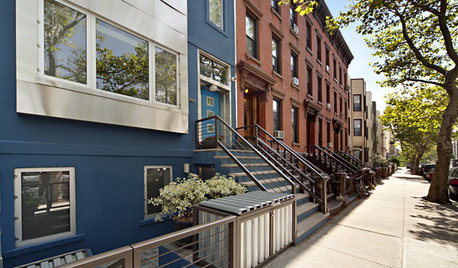
COMMUNITYWant a Cleaner, Safer Neighborhood? Show You Care
Our behavior strongly influences others, says a new study. Show neighbors you care about your street and watch them follow suit
Full Story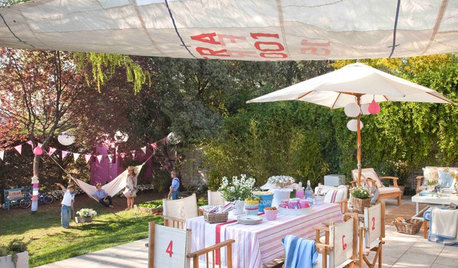
LIFE12 Ways to Nurture a Happy Neighborhood
Having good relationships with neighbors improves the quality of life for all
Full Story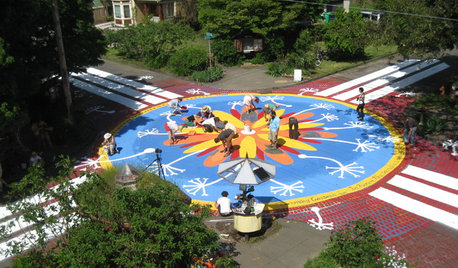
COMMUNITY15 Ways to Make Your Neighborhood Better
Does your community lack ... well, a sense of community? Here's how to strengthen that neighborly spirit
Full Story
ECLECTIC HOMESHouzz Tour: A Storybook House for the Neighborhood
This charming family home incorporates Tudor-style elements, eclectic details and smart planning
Full Story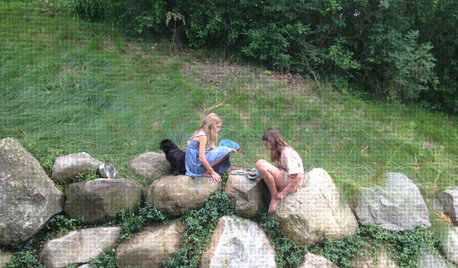
LIFETurn Off the Video Games and Turn On Your Kid's Creativity
Going nuts planning summer activities? Kids overdosing on screen time? It may be time to foster more self-directed play
Full Story
MOST POPULAR10 Things Clean Freaks Know to Be True
Are you completely committed to domestic cleanliness? Then you may recognize some of these spotless truths
Full Story
HOUSEKEEPING10 Things Neat Freaks Know to Be True
Do you err on the incredibly tidy side? Then you probably already live by these nuggets of neat wisdom
Full Story
KIDS’ SPACESWho Says a Dining Room Has to Be a Dining Room?
Chucking the builder’s floor plan, a family reassigns rooms to work better for their needs
Full Story
REMODELING GUIDESOne Guy Found a $175,000 Comic in His Wall. What Has Your Home Hidden?
Have you found a treasure, large or small, when remodeling your house? We want to see it!
Full Story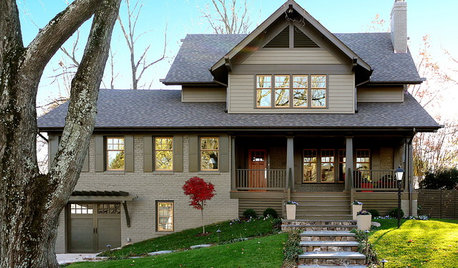
REMODELING GUIDESHouzz Tour: Turning a ’50s Ranch Into a Craftsman Bungalow
With a new second story and remodeled rooms, this Maryland home has plenty of space for family and friends
Full StorySponsored
Columbus Area's Luxury Design Build Firm | 17x Best of Houzz Winner!



reeljake